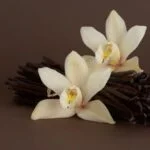Aromatherapy has been used for centuries as a holistic healing practice, harnessing the natural benefits of plant extracts to promote relaxation, improve mood, and enhance overall well-being. Fresh rosemary, in particular, has gained popularity as a key ingredient in aromatherapy due to its unique and potent properties. In this article, we will delve into how to use fresh rosemary for aromatherapy and explore the various ways it can be incorporated into daily wellness practices.
Fresh rosemary is known for its aromatic fragrance and therapeutic benefits, making it a popular choice for those seeking natural remedies for stress relief and mental clarity. With its invigorating scent and versatile applications, using fresh rosemary for aromatherapy offers numerous advantages over traditional dried rosemary. From enhancing mood to promoting relaxation, incorporating fresh rosemary into your aromatherapy routine can have a profound impact on your overall well-being.
When it comes to selecting fresh rosemary for aromatherapy, understanding the different forms and preparations is essential. Whether using essential oils, dried herbs, or fresh sprigs, each form offers unique benefits and affects the aromatherapy experience differently.
Additionally, proper cleaning and drying techniques are crucial for preparing fresh rosemary for optimal use in aromatherapy. In the following sections of this article, we will explore these aspects in more detail and provide practical guidance on leveraging the benefits of fresh rosemary in your aromatherapy practice.
Understanding the Different Forms of Fresh Rosemary for Aromatherapy
Fresh rosemary is a versatile herb that can be used in various forms for aromatherapy. Whether using essential oils, dried herbs, or fresh sprigs, each form of rosemary offers unique benefits and effects when used for aromatherapy.
Here are the different forms of fresh rosemary for aromatherapy:
- Essential Oils: Rosemary essential oil is a highly concentrated form of the herb that is extracted through steam distillation. It is potent and can be easily added to diffusers, massage oils, or homemade room sprays for its aromatic and therapeutic benefits.
- Dried Herbs: Dried rosemary can be used in aromatherapy by creating sachets or potpourri blends. Add a few drops of rosemary essential oil to dried herbs for an extra burst of fragrance and therapeutic properties.
- Fresh Sprigs: Using fresh rosemary sprigs for aromatherapy involves crushing or bruising the leaves to release their natural oils. This method provides an immediate burst of aroma and can be used in bath blends or as a natural air freshener.
Each form of fresh rosemary affects the aromatherapy experience differently, so it’s important to choose the one that best suits your needs and preferences. Experiment with different forms of fresh rosemary to find the one that aligns with your desired aromatherapy outcomes.
To better understand how to use fresh rosemary for aromatherapy, it’s important to know how each form works and how they can be incorporated into various products like bath blends, massage oils, or room sprays. By experimenting with different forms of fresh rosemary, you’ll discover which type resonates most with your personal aromatic preferences and wellness goals.
Preparing Fresh Rosemary for Aromatherapy
Fresh rosemary is a versatile and aromatic herb that has been used for centuries in various cultures for its medicinal and therapeutic properties. When it comes to aromatherapy, using fresh rosemary can bring a sense of calm, clarity, and rejuvenation to the mind and body. In this section, we will explore the importance of properly preparing fresh rosemary for aromatherapy and provide techniques for extracting essential oil from this fragrant herb.
Cleaning and Drying Fresh Rosemary
Before using fresh rosemary for aromatherapy, it is important to ensure that the herb is clean and free from any dirt or impurities. Start by gently rinsing the fresh sprigs under cold water to remove any debris. Pat the rosemary dry with a clean towel or allow it to air dry completely. Once dry, you can proceed with using the fresh rosemary directly or consider extracting essential oil from it.
Extracting Essential Oil From Fresh Rosemary
One popular way to use fresh rosemary for aromatherapy is by extracting its essential oil. To do this at home, you will need a carrier oil such as olive or coconut oil, as well as a glass jar with a tight-fitting lid. Fill the jar halfway with fresh rosemary leaves and then cover them completely with the carrier oil.
Seal the jar tightly and place it in a warm, sunny spot for 2-3 weeks, shaking it occasionally. After this time, strain out the plant material and transfer the infused oil into a clean bottle for use in aromatherapy blends.
Other Usage Options
In addition to extracting essential oil, another way to prepare fresh rosemary for aromatherapy is by using it in herbal baths or incorporating it into homemade room sprays and massage oils. For herbal baths, simply tie together a handful of fresh rosemary sprigs and add them to your bathwater along with Epsom salts for a soothing soak.
To make an aromatic room spray or massage oil, combine freshly crushed rosemary leaves with distilled water or carrier oils like almond or jojoba oil.
By following these techniques for preparing fresh rosemary for aromatherapy, you can harness the full potential of this fragrant herb’s therapeutic benefits in your daily wellness routine.
DIY Fresh Rosemary Aromatherapy Recipes
Fresh rosemary is a versatile herb that can be used in a variety of DIY aromatherapy recipes. Whether you prefer room sprays, bath blends, or massage oils, incorporating fresh rosemary into your aromatherapy routine can provide numerous benefits for both the mind and body. Below are some detailed instructions for creating homemade aromatherapy products using fresh rosemary:
- Room Sprays: To create a refreshing room spray, simply combine distilled water, witch hazel, and a few drops of fresh rosemary essential oil in a spray bottle. Shake well before each use and spritz around your home to promote a sense of calm and mental clarity.
- Bath Blends: For a luxurious and aromatic bath experience, tie a handful of fresh rosemary sprigs in cheesecloth and hang it under the running water as your bath fills. You can also add a few drops of rosemary essential oil to Epsom salts for an invigorating soak that helps to ease muscle tension.
- Massage Oils: Combine carrier oils such as sweet almond or coconut oil with a few drops of fresh rosemary essential oil for an energizing and stress-relieving massage blend. Use this oil to soothe sore muscles or promote relaxation during an at-home spa day.
When creating these DIY aromatherapy products, it’s important to consider the potential skin sensitivities that some individuals may have to essential oils. Always perform a patch test before using any new product on your skin, especially if you have sensitive skin or allergies.
Additionally, be sure to store these products in dark glass containers away from direct sunlight to preserve their potency. With these simple recipes, you can easily incorporate the aromatic benefits of fresh rosemary into your daily self-care routine for an added boost of wellness.
Using Fresh Rosemary for Aromatherapy in Daily Life
Fresh rosemary is a versatile and aromatic herb that can be easily incorporated into daily aromatherapy practices. One of the most common ways to use fresh rosemary for aromatherapy is by utilizing it in a diffuser. Simply add a few sprigs of fresh rosemary to a diffuser with water and enjoy the invigorating scent that fills the room. This method is perfect for creating a refreshing atmosphere in your home or workspace.
Another popular way to benefit from the aromatic properties of fresh rosemary is by adding it to bathwater. To do this, tie a bundle of fresh rosemary sprigs together and hang it from the faucet while filling your bathtub. As the hot water runs through the rosemary, the steam will release its essential oils, providing a soothing and relaxing experience during your bath.
Fresh rosemary can also be used to make scented sachets, which are small fabric pouches filled with dried herbs or flowers that emit fragrance. To create a rosemary-scented sachet, simply place dried rosemary leaves inside a small fabric pouch or piece of cloth and tie it closed with a ribbon or string. These sachets can be placed in drawers, closets, or other small spaces to impart a subtle, natural scent.
Table 1: Fresh Rosemary Aromatherapy Ideas
| Aromatherapy Method | Description |
|---|---|
| Diffuser | Add fresh rosemary sprigs to a diffuser with water for an invigorating aroma |
| Bathwater | Tie fresh rosemary sprigs together and hang them from the faucet while running bathwater for a relaxing experience |
| Scented Sachets | Create small fabric pouches filled with dried rosemary leaves to place in drawers or closets for a natural fragrance |
By incorporating these methods into your daily routine, you can experience the many benefits of using fresh rosemary for aromatherapy and promote overall well-being.
The Mental and Physical Benefits of Fresh Rosemary Aromatherapy
Aromatherapy has been used for centuries as a natural way to improve mental and physical well-being. When it comes to using fresh rosemary for aromatherapy, the benefits are numerous and impactful. From its calming effects on the mind to its potential respiratory support, fresh rosemary is a versatile herb that enhances the overall aromatherapy experience.
Effects on Mood and Mental Clarity
Fresh rosemary essential oil is known for its ability to uplift the mood and improve mental clarity. When used in aromatherapy, the invigorating scent of rosemary can help reduce stress, anxiety, and fatigue. Inhaling the aroma of fresh rosemary can also stimulate cognitive function, enhancing focus and memory. Whether diffused in the air or added to a relaxing bath blend, fresh rosemary is an excellent choice for promoting a positive mindset and mental alertness.
Respiratory Support and Immune System Enhancement
In addition to its mental benefits, fresh rosemary aromatherapy can also provide respiratory support and potentially enhance the immune system. The camphor content in rosemary essential oil makes it effective for clearing congestion and improving breathing.
By inhaling the aromatic vapors of fresh rosemary, individuals may experience relief from symptoms of respiratory conditions such as coughs and sinus congestion. Furthermore, the antimicrobial properties of rosemary can contribute to strengthening the body’s natural defenses against infections when used regularly in aromatherapy applications.
Relaxation and Stress Relief Through Aromatherapy
The soothing aroma of fresh rosemary can promote relaxation and stress relief when incorporated into daily aromatherapy practices. Whether inhaled through diffusion or added to massage oils during relaxation therapy sessions, the calming effects of fresh rosemary can help alleviate tension in both the body and mind. This herb’s unique combination of earthy and herbaceous notes creates a comforting atmosphere that supports emotional balance, making it an ideal choice for unwinding after a long day or practicing mindfulness activities.
By understanding how fresh rosemary can positively impact mental well-being while potentially providing physical health benefits, individuals can confidently explore its use in their aromatherapy routines. Whether seeking relaxation or seeking immune support, incorporating high-quality fresh rosemary into aromatherapy practices can be a valuable addition to one’s holistic wellness approach.
Choosing the Right Fresh Rosemary for Aromatherapy
When it comes to using fresh rosemary for aromatherapy, the quality of the herb is crucial in achieving the desired therapeutic benefits. High-quality, organic fresh rosemary is essential for a successful aromatherapy experience. You can obtain fresh rosemary from specialty grocery stores, local farmers’ markets, or even consider growing your own rosemary plant at home.
One of the most important factors to consider when choosing fresh rosemary for aromatherapy is its purity and potency. Look for organically grown rosemary that has not been treated with pesticides or other harmful chemicals. This ensures that you are getting a high-quality product that is free from any potentially harmful residues.
To maximize the aromatic and therapeutic properties of fresh rosemary for aromatherapy, it’s best to use the herb while it is still fresh and has not wilted or dried out. Freshly picked rosemary contains the highest concentration of beneficial essential oils, which are responsible for its distinctive fragrance and therapeutic effects. When sourcing fresh rosemary, select sprigs that are vibrant in color, fragrant, and free from wilting or yellowing leaves.
| Fresh Rosemary Source | Tips |
|---|---|
| Specialty grocery stores | Look for organic options |
| Farmers’ markets | Inquire about cultivation methods |
| Homegrown | Ensure proper care and maintenance |
By choosing high-quality and freshly harvested organic rosemary, you can ensure that you are getting the most out of this aromatic herb’s therapeutic properties in your aromatherapy practice.
Safety and Precautions When Using Fresh Rosemary for Aromatherapy
In conclusion, the use of fresh rosemary for aromatherapy offers a wealth of benefits for both mental and physical well-being. Not only does it provide a natural and soothing scent, but it also has the potential to positively impact mood, relaxation, mental clarity, respiratory health, and immune function. From its history and specific benefits to its various forms and preparations, this article has provided a comprehensive guide on how to effectively use fresh rosemary for aromatherapy.
When incorporating fresh rosemary into your aromatherapy routine, it is crucial to prioritize safety and take necessary precautions. Whether using it in essential oil form or as a dried herb or fresh sprig, it’s important to be mindful of potential skin sensitivities and any contraindications for certain health conditions.
Proper dilution and usage of fresh rosemary essential oil are essential to ensure a positive experience without adverse effects. Additionally, sourcing high-quality organic and sustainably sourced fresh rosemary is vital for maximizing its purity and potency.
As you explore the creative and practical ways to integrate fresh rosemary into your daily aromatherapy practices-such as using it in a diffuser, adding it to bathwater, or creating scented sachets-always remember to be cautious and considerate of any safety guidelines. Ultimately, harnessing the power of fresh rosemary for aromatherapy can greatly enhance your overall wellness routine when done thoughtfully and responsibly.
By following the suggestions in this article, you can safely enjoy the many benefits that fresh rosemary has to offer in the realm of aromatherapy. Now that you know how to use fresh rosemary for aromatherapy effectively and safely, you can confidently incorporate this powerful herb into your holistic wellness routine.
Frequently Asked Questions
How Do You Use Fresh Rosemary for Scent?
Fresh rosemary can be used for scent by simply crushing a few sprigs and placing them in a small bowl or sachet. This allows the natural fragrance to permeate the surrounding area, providing a fresh and herbaceous aroma.
How Do You Make Rosemary Essential Oil From Fresh Rosemary?
To make rosemary essential oil from fresh rosemary, you will need to crush the rosemary leaves to release their natural oils, then mix them with a carrier oil such as olive or coconut oil. Allow the mixture to infuse for several weeks before straining out the plant material.
How Do You Use Fresh Rosemary Around the House?
Fresh rosemary can be used around the house in various ways. It can be used in homemade cleaning solutions to add a natural disinfectant and pleasant scent. Additionally, it can be added to potpourri or sachets to freshen closets and drawers. Finally, using fresh rosemary in cooking not only adds flavor but also fills the kitchen with its delightful aroma.

Are you looking for a natural way to improve your health and wellbeing?
If so, aromatherapy may be the answer for you.





